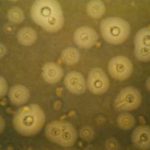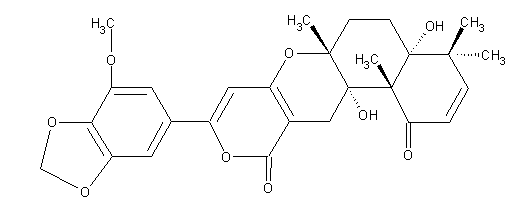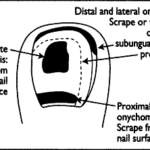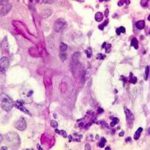Date: 26 November 2013
Secondary metabolites trivial name – territrem A
Copyright: n/a
Notes:
Species: A. terreusSystematic name: 4H,11H-Naphtho(2,1-b)pyrano(3,4-e)pyran-1,11(5H)-dione, 4a,6,6a,12,12a,12b-hexahydro-4a,12a-dihydroxy-9-(7-methoxy-1,3-benzodioxo-5-yl)-4,4,6a,12b-tetramethyl-, (4aR,6aR,12aS,12bS)- 4H,11H-Naphtho(2,1-b)pyrano(3,4-e)pyran-1,11(5H)-dione, 4a,6,6a,12,12a,1Molecular formulae: C28H30O9Molecular weight: 510.532Chemical abstracts number: 70407-19-1Selected references: Ling KH, Yang CK, Peng FT. Territrems, tremorgenic mycotoxins of Aspergillus terreus.Appl Environ Microbiol. 1979 Mar;37(3):355-7. Ling KH, Liou HH, Yang CM, Yang CK. Isolation, chemical structure, acute toxicity, and some physicochemical properties of territrem C from Aspergillus terreus. Appl Environ Microbiol. 1984 Jan;47(1):98-100.Toxicity: A tremorgenic mycotoxin with an intraperitoneal LD50 in mice of 15 to 19 mg/kg body-weight. mouse LD50 intraperitoneal 17600ug/kg (17.6mg/kg) Applied and Environmental Microbiology. Vol. 47, Pg. 98, 1984.
Images library
-
Title
Legend
-
BAL specimen showing hyaline, septate hyphae consistent with Aspergillus, stained with Blankophor
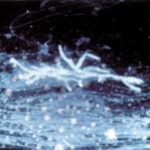
-
Mucous plug examined by light microscopy with KOH, showing a network of hyaline branching hyphae typical of Aspergillus, from a patient with ABPA.
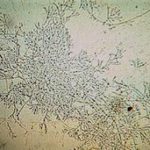
-
Corneal scraping stained with lactophenol cotton blue showing beaded septate hyphae not typical of either Fusarium spp or Aspergillus spp, being more consistent with a dematiceous (ie brown coloured) fungus
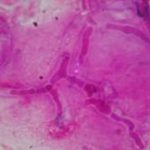
-
Corneal scrape with lactophenol cotton blue shows separate hyphae with Fusarium spp or Aspergillus spp.
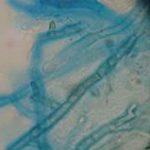
-
A filamentous fungus in the CSF of a patient with meningitis that grew Candida albicans in culture subsequently.
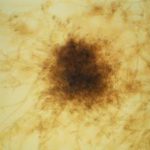
-
Transmission electron micrograph of a C. neoformans cell seen in CSF in an AIDS patients with remarkably little capsule present. These cells may be mistaken for lymphocytes.
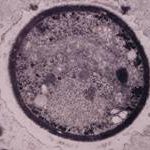
-
India ink preparation of CSF showing multiple yeasts with large capsules, and narrow buds to smaller daughter cells, typical of C. neoformans
